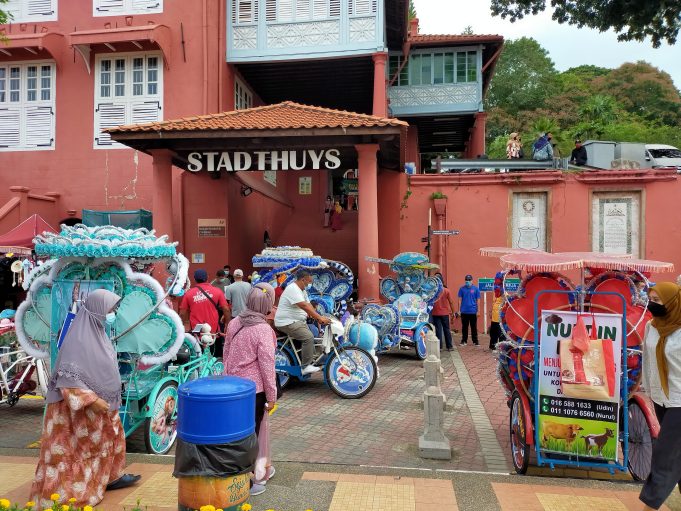By: Mohd Hazmi Mohd Rusli
IN response to the recently published article by Ranjit Singh Malhi titled “Does Peninsular Malaysia belong exclusively to Malays?” in Malaysiakini, it is important to address several misconceptions that challenge the historical and legal foundations of Malay presence in this region. While Malaysia is a proudly multicultural nation, historical facts must not be distorted to undermine the position of the Malays and other bumiputras as the foundational people of the Malay Peninsula. The narrative suggesting that the Malays were merely one of many later arrivals disregards centuries of sovereignty, governance, and identity tied to Tanah Melayu.
Not only was the Malay Peninsula historically known as Tanah Melayu, but the territories of Sabah and Sarawak were also part of this cultural and political sphere. Both regions were once under the influence and control of the Brunei and Sulu Sultanates. These sultanates were both established Malay-Muslim polities that reflect the wider extent of the Malay world in the pre-colonial era.
When we talk about Malaysian history (particularly the Malay Peninsula) many of us tend to say that our land was colonised by foreign powers for hundreds of years. First by the Portuguese, then the Dutch, and finally the British. But if we look closer, especially from the perspective of international law and the actual position of the Malay rulers, the story is not so straightforward.
In truth, most of the Malay States, excluding the Straits Settlements of Penang, Melaka, and Singapore were never fully colonised in the strict legal sense. The Malay rulers maintained their sovereignty for most of our history. It was only during two short periods i.e. the Japanese Occupation (1941–1945) and the Malayan Union (1946–1948) that this sovereignty was completely taken away.
Combined, these two periods lasted slightly more than five years, a tiny portion of our long and proud history. Yet many Malaysians still grow up believing we were colonised for centuries. This is a narrative that deserves to be questioned.
Melaka was not the whole of Tanah Melayu
Let us go back to 1511, when the Portuguese conquered Melaka. It’s important to remember that at that time, Melaka was just one kingdom. After its fall, the Malay Sultanate of Johor quickly rose to continue the legacy of Melaka. When the Dutch replaced the Portuguese in 1641, they too only controlled Melaka. They never ruled the entire Malay Peninsula.
In fact, both the Portuguese and Dutch powers were confined to the fortress area of Melaka, centred around A Famosa. Historical records show that this fortified zone was approximately 0.57 square kilometres (or 57 hectares) in size — a very small footprint when compared to the vastness of the Malay Peninsula. Their influence rarely extended beyond the walls of the fort without cooperation from the surrounding Malay rulers.
The other Malay States — Kedah, Perak, Johor, Terengganu and others — continued to exist under their own sovereign rulers, who even signed treaties and conducted diplomacy independently. So the idea that Tanah Melayu was under foreign rule since 1511 is misleading. Only Melaka was colonised. The rest of the Malay Peninsula remained under native rule for centuries.
Kedah’s brief loss of sovereignty to Siam
One notable exception was Kedah, which was invaded by Siam in 1821. The Siamese ousted the Sultan and placed the state under direct Siamese control. However, Kedah’s sovereignty was restored in 1842 when the Sultan was reinstated after years of negotiation and resistance. This again shows that even when sovereignty was lost, it was not permanent — and efforts were made diplomatically to regain it.
British rule and the Malay rulers
The British started to get more involved in the 19th century through the Residential system, especially after the Pangkor Agreement of 1874. But the Malay rulers remained on their thrones. The British governed through treaties and never formally annexed the Malay States (except for the Straits Settlements, which were crown colonies).
If Malaya was truly colonised in the full sense, there would be no need for these treaties. The clearest example was in 1945, when British representative Sir Harold MacMichael had to get each Malay ruler to sign away their powers to form the Malayan Union. This act alone shows that, under international law, the sovereignty of the Malay rulers was still recognised —because you don’t negotiate with someone who holds no legal authority.
Japanese occupation and Malayan Union
The only times when the sovereignty of the Malay rulers was entirely suspended were during the Japanese Occupation (from December 1941 to August 1945) and the Malayan Union (from April 1946 to January 1948). The Japanese sidelined the rulers and imposed direct military rule. Then, after the war, the British returned with the idea of the Malayan Union, stripping the Malay rulers of power and centralising control.
Public outrage and mass protests followed, leading to the Union’s collapse after just 21 months. Sovereignty was restored with the formation of the Federation of Malaya in 1948. International Law and the Question of Colonisation Under the lens of international law, most of the Malay States were never fully colonised.
They remained sovereign entities under British protection and administration, but were not formally annexed as colonies. Sovereignty was weakened, but not extinguished — except for those brief six years during the Japanese Occupation and the Malayan Union.
So, is Malay Peninsula Tanah Melayu?
From both historical and legal perspectives, the answer is in the affirmative. The region has long been home to Malay polities with sovereign rulers who exercised authority, engaged in diplomacy, and maintained territorial integrity. Despite periods of foreign interference, especially in Melaka and later under British influence, the Malay rulers retained their legal sovereignty over most of the Peninsula.
Even Sabah and Sarawak, once governed by the Brunei and Sulu Sultanates, were part of the broader Malay world shaped by shared culture, language, and religion. Recognising this reality is not about excluding non-Bumis but about acknowledging the foundational role of the Malays and other Bumiputras in shaping the identity and sovereignty of this land we now call Malaysia.
To deny the fact that Peninsular Malaysia is historically the land of the Malays is not only to overlook its deep cultural and historical roots but also to undermine the sanctity and sovereignty of the Malay Rulers Institution, which the Federal Constitution upholds, fundamental to the governance and identity of the nation. In fact, a quick Google search reveals that the literal meaning of the name “Malaysia” is “Land of the Malays’.
Secondly, were we colonised for centuries? The answer is no – not in the legal sense, and not in the way it is often portrayed. With the exception of the Straits Settlements, the brief Siamese occupation of Kedah, and the foreign presence confined to 57 hectares of Melaka, the Malay rulers retained their thrones and their legal status for most of history.
We should teach our youth about how the Malay States held on to their sovereignty through diplomacy and strength. This understanding of our sovereignty being momentarily challenged, but never fully lost, helps shape our identity and pride as a nation today.
The writer is the Head of the International Law Unit at the Faculty of Syariah and Law, Universiti Sains Islam Malaysia, and a Research Associate at the Asian Institute of International Affairs and Diplomacy (AIIAD), Universiti Utara Malaysia.

















